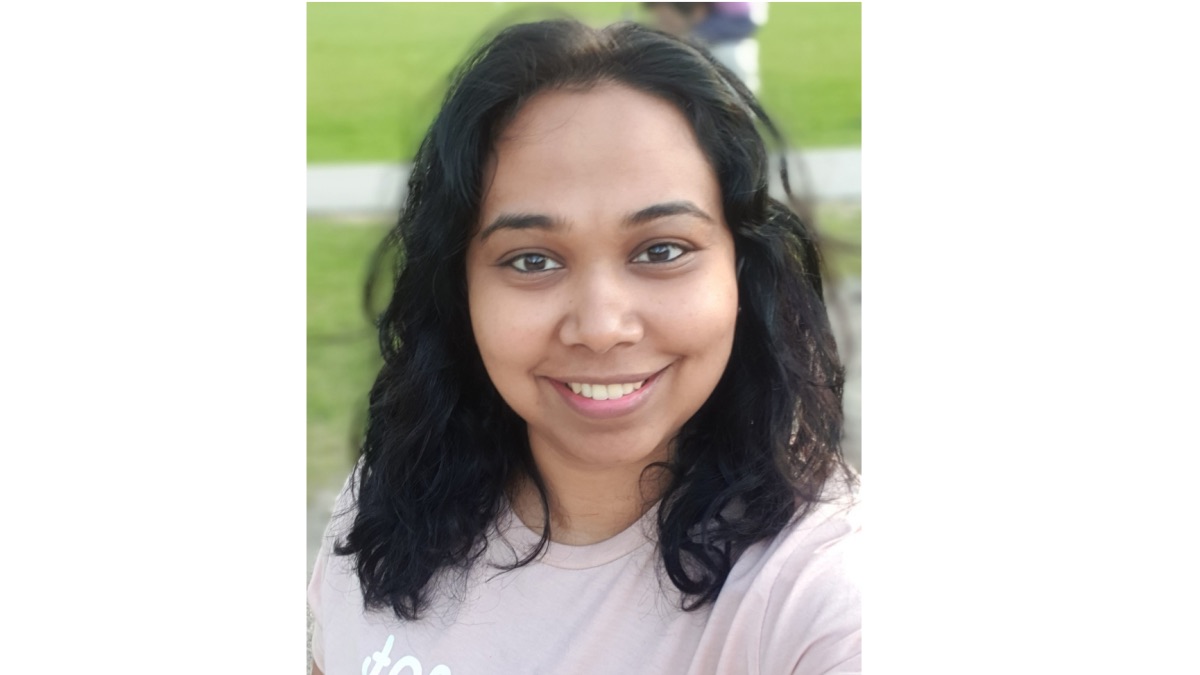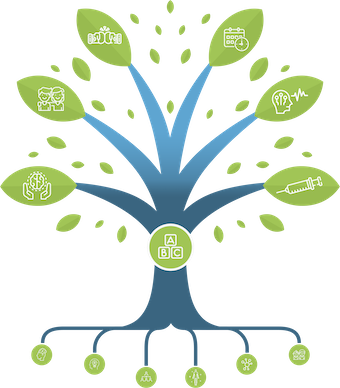Shruti’s Story
“I interviewed Shruti a few months ago and she has written the following to share her story:”
I don’t remember life without pain, or migraine. I was 12 or 13 when I was first diagnosed. It was after years of trying to articulate the pain. I’d say my head hurts, and the next hour I’d say my tummy hurt and so many other confusing symptoms. It is not surprising that my family and even my doctors assumed I was just trying to get out of school. My mother took me to so many places trying to find a diagnosis and a solution. Finally, we met a neurologist who gave us an answer – chronic migraine stemming from chronic stress, anxiety and depression.
Even as I started taking prophylactics, I had light sensitivity, sound sensitivity, and mood swings. Everything around me was a trigger. Standing outside under the hot sun during PE or band practice was the worst experience. I’d always black out and wake up with a throbbing headache that lasted days. I’m 31 now. And I’ve probably had less than 100 migraine-free days all my life. There is an ever-growing list of triggers and symptoms that are still difficult to explain.
It is lonely, being a child with migraine. I couldn’t be like the other kids. I hated playing outside, or running or anything that involved being loud or sweaty. Everyone assumed I was lazy, weird, arrogant, and antisocial. Eventually, I began to believe it. I went from being a star student who was into so many cultural and literary clubs to someone struggling to make it through the school year. I had big dreams but my body and my brain were not accommodating. I could feel my self-confidence, self-esteem and all things self, just ebbing away. It is a miracle that I found a way to have a career.
I studied biotechnology but I switched to being a content writer. I worked with several startups across India. I was really good at my job and as a result, I was often overworked. It exacerbated my migraine condition so much that I’d to quit in 7 months to rest and recuperate. I always started over from scratch. Finally in 2016 I found a company that offered flexible work hours and an option to work from home. I was thriving under an excellent manager who was both empathetic and encouraging. I quickly rose from my position as a writer to the Head of a content marketing team. Slowly I began to notice brain fog, issues with memory and concentration. Around this time, my daughter was 1 year old, and we were preparing to move to Canada.
When we landed in Toronto, it felt like years of denying migraine its true place in my life began to catch up with me. The weather, pandemic, lack of social circle and guilt for not being able to keep up with an energetic toddler triggered an intractable migraine attack that lasted months. I had stopped taking prophylactics before pregnancy and was only depending on Tylenol. It didn’t help when my GP said “I don’t think it is migraine, maybe you are just stressed.” I had to advocate for myself week after week (with increasing anxiety), insisting to be referred to a specialist. When I was finally referred, there was a year’s wait time, which was again rescheduled due to Covid. I don’t know how I made it through 2020 with no real medication or treatment plan. Finally at the beginning of this year, I was prescribed Aimovig. My neurologist took the time to explain my MRI and the symptoms I was feeling as a result of white lesions. It gave me peace, and helped me understand why I am the way I am.
Chronic migraine has impacted every relationship in my life. It has been difficult for people around me to understand my irritability, fatigue, and sensitivity. I believed them when they said I was being difficult or lazy. They have never experienced this before, so they couldn’t have understood. Now, after having found online support groups in Canada and a supportive Instagram community, I finally don’t feel alone in my struggle against migraine.
There’s a lot of advocacy that needs to be done. Medicine doesn’t understand migraine. How can regular people grasp how it destroys us? You can find a cure only when you understand the cause or a mechanism of a disease. Considering that migraine impacts at least 3 in a room of 10, it should be taken more seriously. There should be more funds allocated for research. I should also not have to beg my GP to believe me or wait for over a year to see a specialist. There should be integrated cross functional headache clinics across the country. Mental health care for patients with chronic migraine should also be under OHIP. This disease should not drive a person into depression from mere helplessness.
I have more bad days than good days. Sometimes it is so hard to get out of bed. I realized that I just need to find a way to manage my symptoms until the healthcare industry and the government catches up. I have a routine and a proper sleep schedule. Every day I practice yoga, meditate, walk, eat healthy, take vitamins, hydrate, read/write, rediscover things I love, and spend time with my family. Advocating on Instagram has also been integral to my healing journey. I post on the reality of migraine and it has been helping others like me explain their disease better to their loved ones. The dream is to create a migraine-friendly world. (You can find me on Instagram.com/chronicallymeh or on my advocacy page www.chronicallymeh.com).
Honestly, I’m still struggling. I feel like a ghost of the person I used to be. But I’m sure there is at least one person out there who feels the way I do. I hope sharing my story makes you feel less alone.

Sharing your voice can help you and others in the migraine community find support and a path to improvement.
Categories
THE MIGRAINE TREE
- BRANCHES
- ACUTE TREATMENTS
- DEVICES AND NEUROMULATIOIN
- PREVENTIVE TREATMENTS
- PROCEDURES AND INJECTIONS
- SELF-CARE AND LIFESTYLE
- SOCIAL LIFE
- TRUNK
- ROOTS
OTHER CATEGORIES



